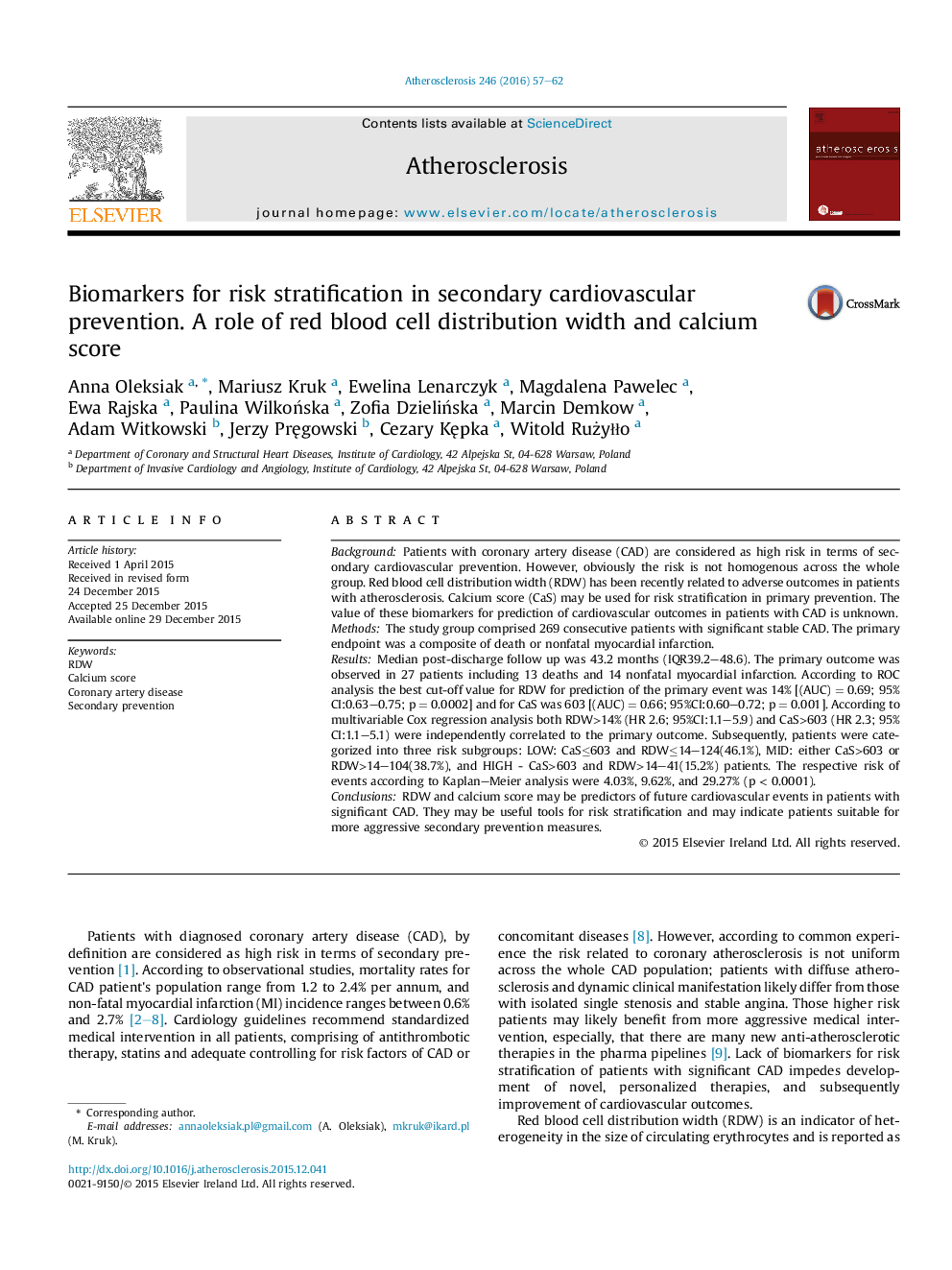| کد مقاله | کد نشریه | سال انتشار | مقاله انگلیسی | نسخه تمام متن |
|---|---|---|---|---|
| 5943416 | 1574719 | 2016 | 6 صفحه PDF | دانلود رایگان |
- RDW and calcium score are strong and independent predictors of future cardiovascular events in patients with significant CAD.
- The study revealed higher calcium score risk threshold in patients with significant CAD than patients with suspected CAD.
- Multi-marker approach to stratify risk in secondary prevention in CAD is feasible.
BackgroundPatients with coronary artery disease (CAD) are considered as high risk in terms of secondary cardiovascular prevention. However, obviously the risk is not homogenous across the whole group. Red blood cell distribution width (RDW) has been recently related to adverse outcomes in patients with atherosclerosis. Calcium score (CaS) may be used for risk stratification in primary prevention. The value of these biomarkers for prediction of cardiovascular outcomes in patients with CAD is unknown.MethodsThe study group comprised 269 consecutive patients with significant stable CAD. The primary endpoint was a composite of death or nonfatal myocardial infarction.ResultsMedian post-discharge follow up was 43.2 months (IQR39.2-48.6). The primary outcome was observed in 27 patients including 13 deaths and 14 nonfatal myocardial infarction. According to ROC analysis the best cut-off value for RDW for prediction of the primary event was 14% [(AUC) = 0.69; 95%CI:0.63-0.75; p = 0.0002] and for CaS was 603 [(AUC) = 0.66; 95%CI:0.60-0.72; p = 0.001]. According to multivariable Cox regression analysis both RDW>14% (HR 2.6; 95%CI:1.1-5.9) and CaS>603 (HR 2.3; 95%CI:1.1-5.1) were independently correlated to the primary outcome. Subsequently, patients were categorized into three risk subgroups: LOW: CaSâ¤603 and RDWâ¤14-124(46.1%), MID: either CaS>603 or RDW>14-104(38.7%), and HIGH - CaS>603 and RDW>14-41(15.2%) patients. The respective risk of events according to Kaplan-Meier analysis were 4.03%, 9.62%, and 29.27% (p < 0.0001).ConclusionsRDW and calcium score may be predictors of future cardiovascular events in patients with significant CAD. They may be useful tools for risk stratification and may indicate patients suitable for more aggressive secondary prevention measures.
Journal: Atherosclerosis - Volume 246, March 2016, Pages 57-62
